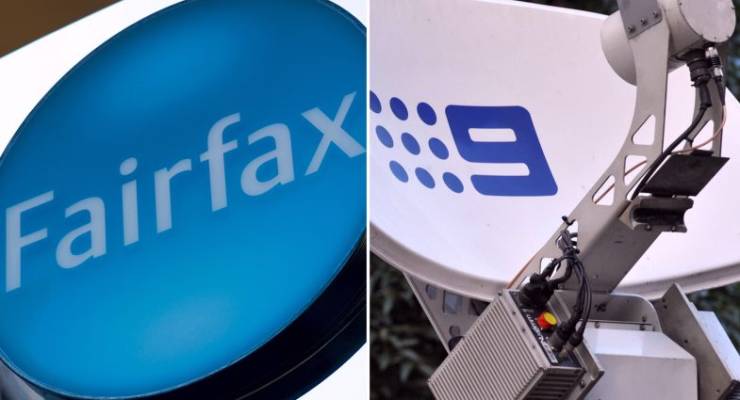
The Fairfax Media brand is all but dead as its mastheads and digital platforms will spend the summer being administratively integrated into Nine Entertainment.
The takeover got off to a bad start last week as News Corp dominated at the annual Walkley Awards, taking 10 awards, including the Gold Walkley, to Fairfax’s four. Considering the decades-long effort to establish Fairfax as a synonym for deep reporting, quality writing and photography, and courageous advocacy, it’s surprising at first glance that the brand has been allowed to quietly fade away.
A confusing start
Dumping the Fairfax brand suggests that both incoming and outgoing managements have a cold-eyed estimation that it’s not worth much; its value as a brand worn away by a decade of job cuts and confused positioning.
Little more than a decade ago, the Fairfax metropolitan mastheads — The Sydney Morning Herald, The Age, The Australian Financial Review, The Canberra Times and related Sunday papers — employed more than 1200 journalists. Now, they get by with somewhere fewer than 500. At the same time, the company’s redundancy programs involved deliberately targeting its most highly-paid journalists.
This has been great for the bottom line, but the gaps in its journalism have become increasingly obvious. News Corp has had similar job cuts (although with less publicity), but it’s been more reluctant to release its high-flyers, like this year’s Gold Walkley winner Hedley Thomas.
Though all this, however, the outgoing Fairfax and the incoming Nine management have been keen to stress that the editorial values of the old Fairfax Media will live on.
Old strategies
At one level, the marketing of “Fairfax Media” as the company’s nominated news supplier was always misconceived — an attempt to mesh the nationally integrated pool of reporters with state-based or local mastheads. It was read (at least in Melbourne) as code for “The Sydney Morning Age“.
More detrimentally, the value proposition — expressed as “Independent. Always.” — was undermined long ago by the decision of how the company would approach online news. Early to the web, Fairfax decided — along with just about every other newspaper company in the developed world — that profits would flow from trading on the transfer of advertising dollars from analogue to digital. This proved harder than it looked.
In print, Fairfax needed editorial content designed to attract the prized “AB” demographic — wealthy, educated readers — who, in turn, attracted higher priced ads. Online, the company just needed undifferentiated hits and clicks. The more hits, the more dollars. As a result, the company deliberately positioned the SMH and Age websites as a mass-market offering. (News did the same with the fortuitously branded news.com.au).
The Fairfax approach was at odds with the global industry view that argued for consistent positioning across print and digital products. The company made various attempts to reconcile the conflict by keeping the mastheads as the online brand and by attempting to embed up-market or content-heavy engagement such as the National Times sub-site or Margo Kingston’s web diary. It embraced the tabloid platform as an opportunity to produce up-market, subscriber-based digital alternatives to the web page.
Internally, journalists complained that the papers were increasingly required to reorient themselves to reflect the online positioning, particularly after the merger with Rural Press in 2008.
Managing tension
As long as the printed paper remained the dominant product this tension could be managed. Now the SMH website’s unique visitors are about 100 times the number of its print circulation. The up-market branding jars with the mass-market positioning. And when branding and positioning are mismatched, a company loses authenticity, clarity and trust.
News Corp’s tabloids have always been positioned as mass-market, and have more simply transitioned to establish news.com.au as the leading online news site. At the same time, it has held The Australian separate, with its own up-market (and now right-wing) positioning both in print and online.
The shift to a reader revenues strategy based on subscriptions offers the now-Nine mastheads an opportunity (and need) to realign their digital and print positions out of the commodified mass-market space.
However, free-to-air networks have mass-market deep within their own DNA. Recreating a more focussed journalism product within that culture will require imagination — and a fair bit of luck.








Fairfax’s WA Today website has suddenly started telling me I need to subscribe to continue reading it. I probably won’t while Perth Now and The West are still advert funded.
I saw the phrase “early to the web”. I have been looking at internet sites since the mid 1990’s when everything was still experimental. The Fairfax web sites were shite. They never had clue. The web site today is still shite and I refuse to bother with it, even though I actually have a paid subscription (along with the weekend print papers). I think, in the early days at least, they still treated the web site as the poor cousin to the print papers and never put the required effort into getting it right. Now it is too late, and they still haven’t got it right. Both Crikey and the Guardian have, to some extent, done better, although there is a lot I could quibble about over Crikey.
When a news organisation decides to improve the bottom line by shedding journalists you know that it has lost the plot.
Good riddance.
Pity about the loss of Zits & Non Sequitur though and the xwords were OK.